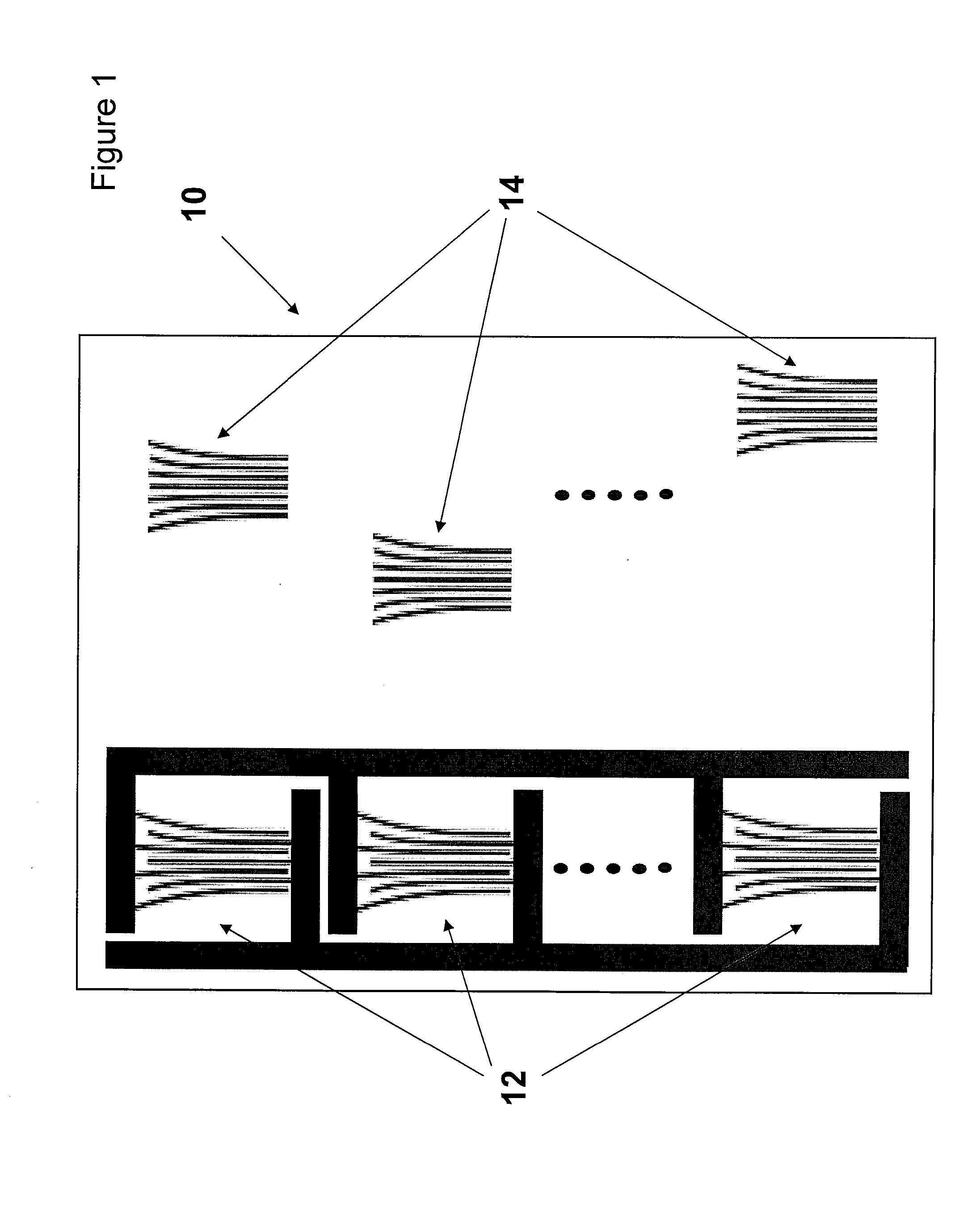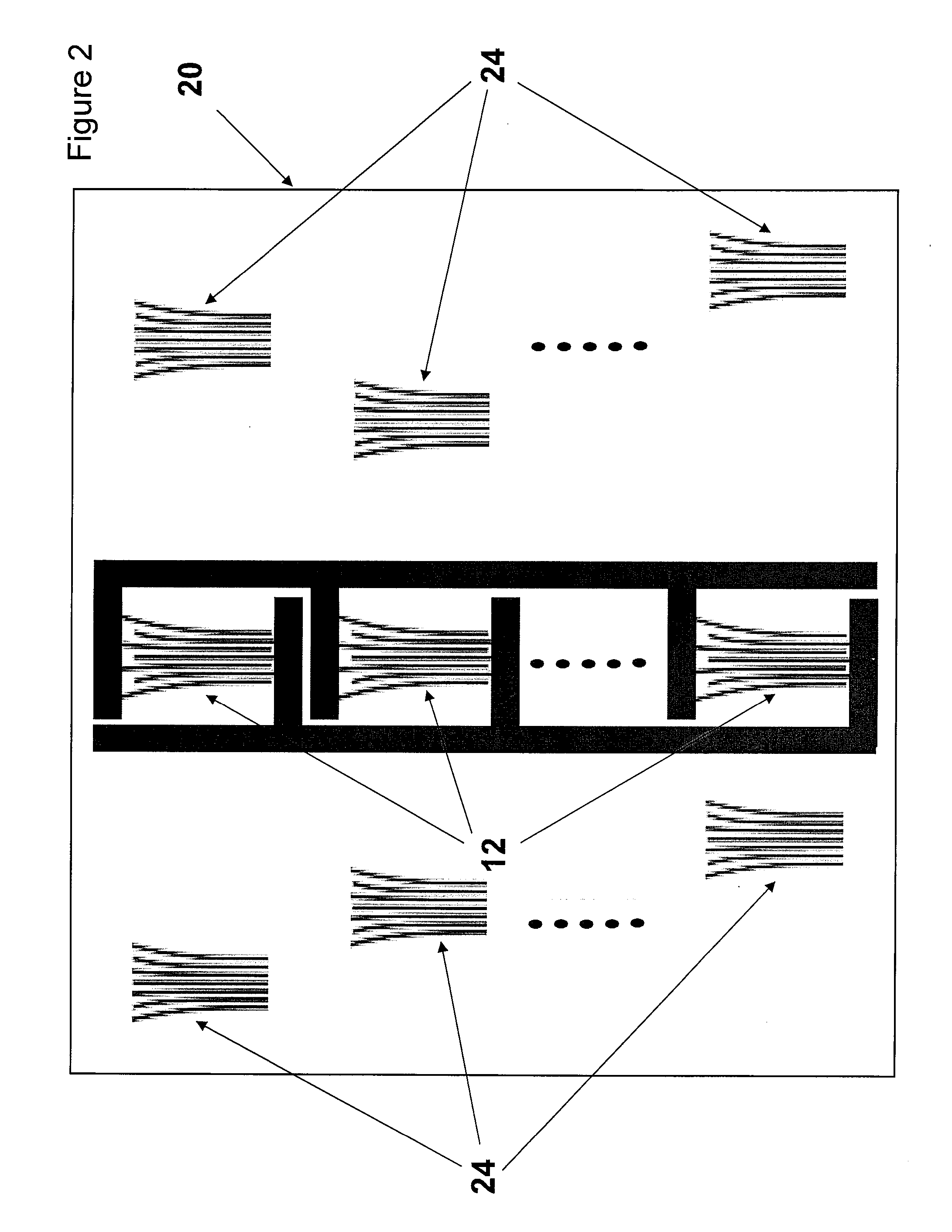Saw Sensor Tags with Enhanced Performance
a technology of enhanced performance and sensor tags, applied in the field of rfid tags of saws, can solve the problems of rfid tags, limited number of sensor codes that will operate simultaneously, and high reflection loss
- Summary
- Abstract
- Description
- Claims
- Application Information
AI Technical Summary
Benefits of technology
Problems solved by technology
Method used
Image
Examples
embodiment 110
[0045]One dispersive SAW ID tag / sensor device embodiment 110 is shown in FIG. 6. In this embodiment, the interrogator 112 sends out an up chirp signal 116 which is picked up by sensor / tag 110. There is a matched chirp filter transducer 118 in the sensor, which compresses the signal and sends a compressed pulse 122 propagating along the surface of the device. This compressed pulse is reflected back from the reflectors 130, producing a string of compressed pulses 124 incident on the transducer. In response to these pulses, the chirp transducer radiates a string of chirp signal pulses 126 back, where the chirp slope of these pulses is the opposite of the originally transmitted signal. The receiver 114 then utilizes a matched filter 120 to compress the chirp pulses and produce a string of compressed pulses for use in identification or measurement. Shown for completeness is an external impedance varying load sensor device 128 electrically connected to one of the reflecting elements. As d...
embodiment 310
[0047]Another dispersive device embodiment 310 is shown in FIG. 9. In this embodiment, a chirp signal 316 feeds an encoder 320 that superimposes another code (any known type of code can be used, a Barker code is one example). The resulting dispersive coded signal is amplified and transmitted by transmitter 312 to the sensor / tag device 310. At the device, a transducer 318 with ½ the chirp length (in time) of the chirp used to generate the signal is used to half-compress the pulse. This produces a coded (again Barker coded for example) and still dispersive signal 322 that propagates towards the reflectors. Each reflector 328 is coded with the same code (again a Barker code for example), and hence compression of this code occurs upon reflection. Thus each reflector reflects back a time reversed and delayed version of the chirp pulse used to generate the original signal, with a time extent of half the original chirp length. These pulses 324 are received by and compressed by the transduc...
embodiment 410
[0048]Another sensor embodiment 410 shown in FIG. 10 utilizes a chirped 416 and coded 428 transmitted signal produce by transmitter 412 with a chirp transducer 418 in the sensor / tag 410 to “de-chirp” the signal, producing compressed but still coded pulse 422, and coded reflector segments 430 to correlate with the transmitted code and produce a train of compressed pulses 424 propagating back to the transducer. As shown in FIG. 10, this would require time-symmetric code sequences in order for the code to be half-compressed on the way into each reflector and half-compressed on the way out of each reflector. This generates a train of chirped pulses 426 with a sense that is opposite that of the chirp used in the transmitted signal, which can be compressed with a matched filter 420 in the receiver to produce a train of pulses with delays corresponding to the reflector delays. The received and decoded signal can be used for ID code recognition or sensing, or both depending on the applicati...
PUM
 Login to View More
Login to View More Abstract
Description
Claims
Application Information
 Login to View More
Login to View More - R&D
- Intellectual Property
- Life Sciences
- Materials
- Tech Scout
- Unparalleled Data Quality
- Higher Quality Content
- 60% Fewer Hallucinations
Browse by: Latest US Patents, China's latest patents, Technical Efficacy Thesaurus, Application Domain, Technology Topic, Popular Technical Reports.
© 2025 PatSnap. All rights reserved.Legal|Privacy policy|Modern Slavery Act Transparency Statement|Sitemap|About US| Contact US: help@patsnap.com



